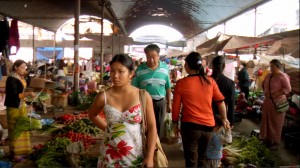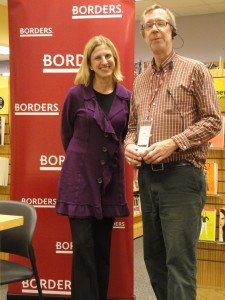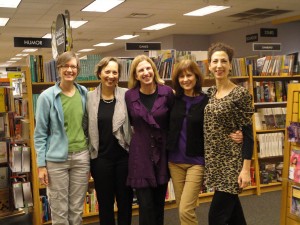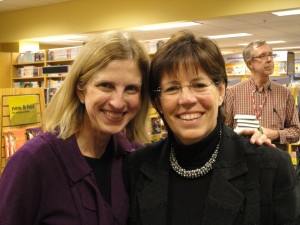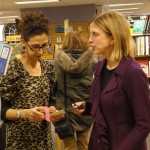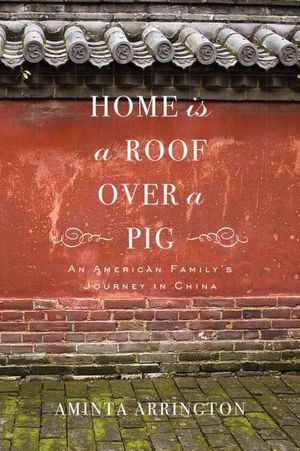
Like many other adoptive parents with children born in another country, I harbor a fantasy of someday packing up our family and moving to the land of my children’s birth. In this dream scenario, my husband and I rent a house, enroll the kids in school, and get jobs to pay the bills. Once situated, we learn the language, shop in the local market, experience traditional holidays, and eat authentic food. We transcend the rank of tourist, and become regulars in the neighborhood. More important, so do our children.
Writer and adoptive mother Aminta Arrington has done exactly this, and her newly published memoir, Home is a Roof Over a Pig (Overlook Press), brings to life her family’s story.
The book opens with Aminta and her husband, Chris, as parents in a blended family: two teenage sons from Chris’s first marriage, and three young children together, including their middle child, Grace, a preschooler whom they adopted from China three years earlier. When Chris retires from his 26-year military career, Aminta, who studied in Japan and holds a master’s degree in international relations from Johns Hopkins, gets the couple hired as teachers of English at Taishan Medical College in the province of Shandong, south of Beijing.
As Chris observes after he, Aminta, and their three youngest children settle into their new, small apartment, “It’s China out there. We are in the real China.” Almost everything in the family’s life and world is different, from the alphabet (there is none; they use characters), to child-rearing (for starters, a one-child policy), to philosophies of education (a single textbook, on which is based the dreaded “test”), to politics (a changing economy, where Mao remains an influence). But after the expected shaky start (which really isn’t that shaky, considering), Aminta, Chris, and their children adjust remarkably well. Before long, everyone speaks, reads, and writes Chinese. Six years later, the family lives in Beijing.
Aminta Arrington is the best kind of guide to a foreign country: curious, open-minded, and observant. She befriends several of her students, who reveal their thoughts on Chinese attitudes and mindsets while participating in her informal, after-school salons. Arrington is also a gifted linguist, fascinated with the Chinese language. Among her many lucid explanations of the origins and meanings of pictographs, she relates that the title of her book comes from the Chinese character meaning “home,” rendered as a roof over a pig.
As an adoptive mother, I was inspired by Arrington’s wholehearted embrace of Chinese culture, and the efforts she made to connect her daughter Grace with the foster family who cared for her as an infant. Readers who wonder about this experience will revel in Arrington’s report of the entire village welcoming Grace, including the “Eldest Brother” who had been her special companion. Although Aminta and Chris decide not to visit the orphanage who placed Grace—the couple objects to the obligatory “donation”—Aminta is able to establish that the official version of her daughter’s birth story—the “finding location” and the identity of the person who found her—is actually false. Aminta sums up her reaction with these words:
“I did not have the facts surrounding her birth or her finding to give to my daughter. And ultimately, I could not give her the culture or the life she left behind. But I could give her something else. A whole village who remembered her. A knowledge that she was not just Chinese, and not just from somewhere in the Jiangxi province, but from a certain place. Not words on a map but a real place alive with the faces of those who lived there and loved her. I could give her relationships.”
Isn’t that we all hope for our children?
Home is a Roof Over a Pig is a must-read for adoptive parents with children born in China. It will also appeal to anyone interested in contemporary China, its educational system, language, and culture. Armchair travelers will delight in Arrington’s vivid depictions of daily life in China and trips to destinations well-known and off the beaten track. Arrington’s story is engaging from beginning to end. I recommend it.
To learn more about Aminta Arrington, including how to order her book, visit amintaarrington.com.


 ShareThis
ShareThis
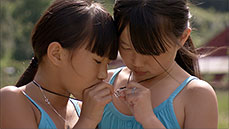



 ShareThis
ShareThis